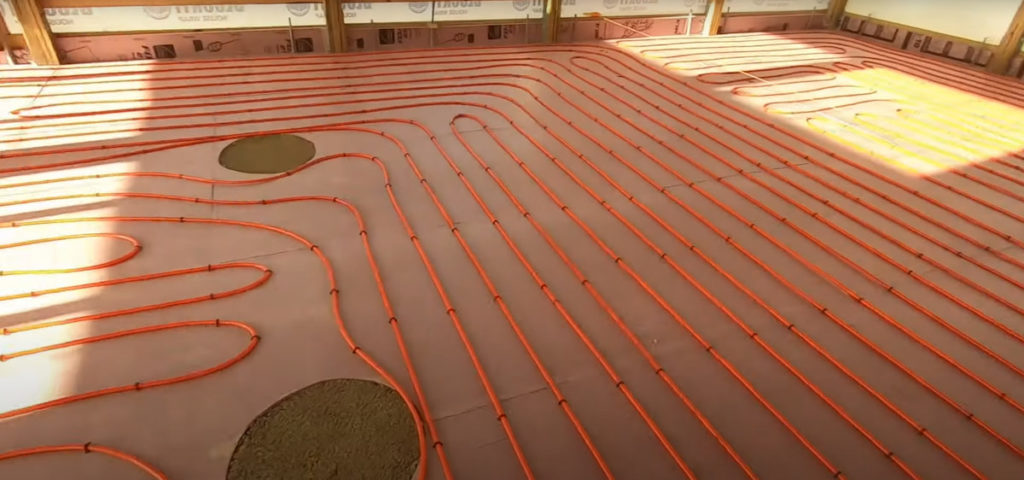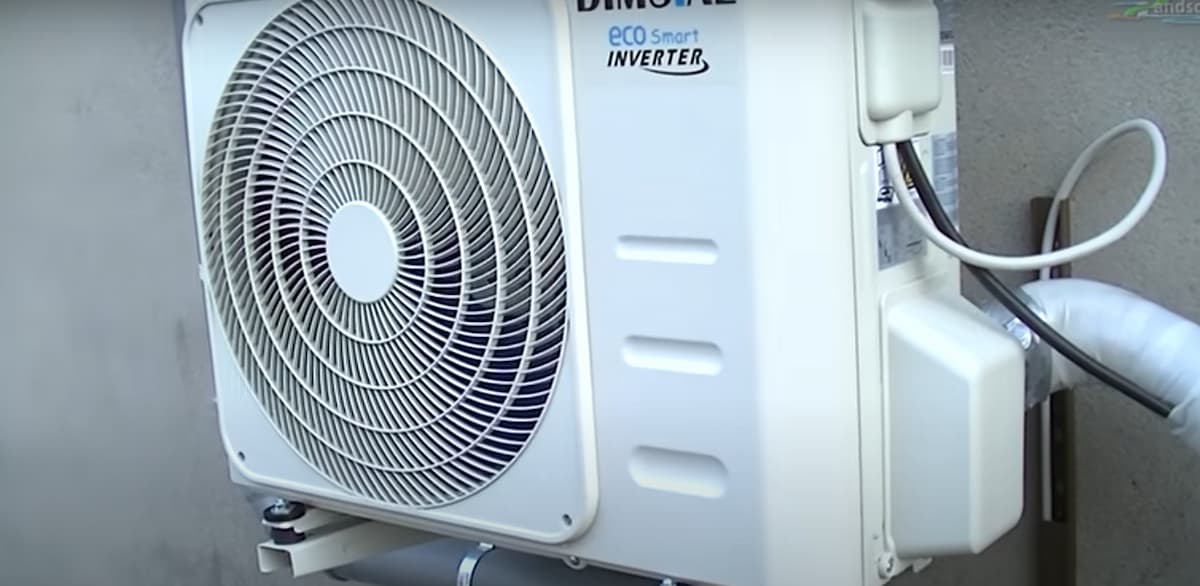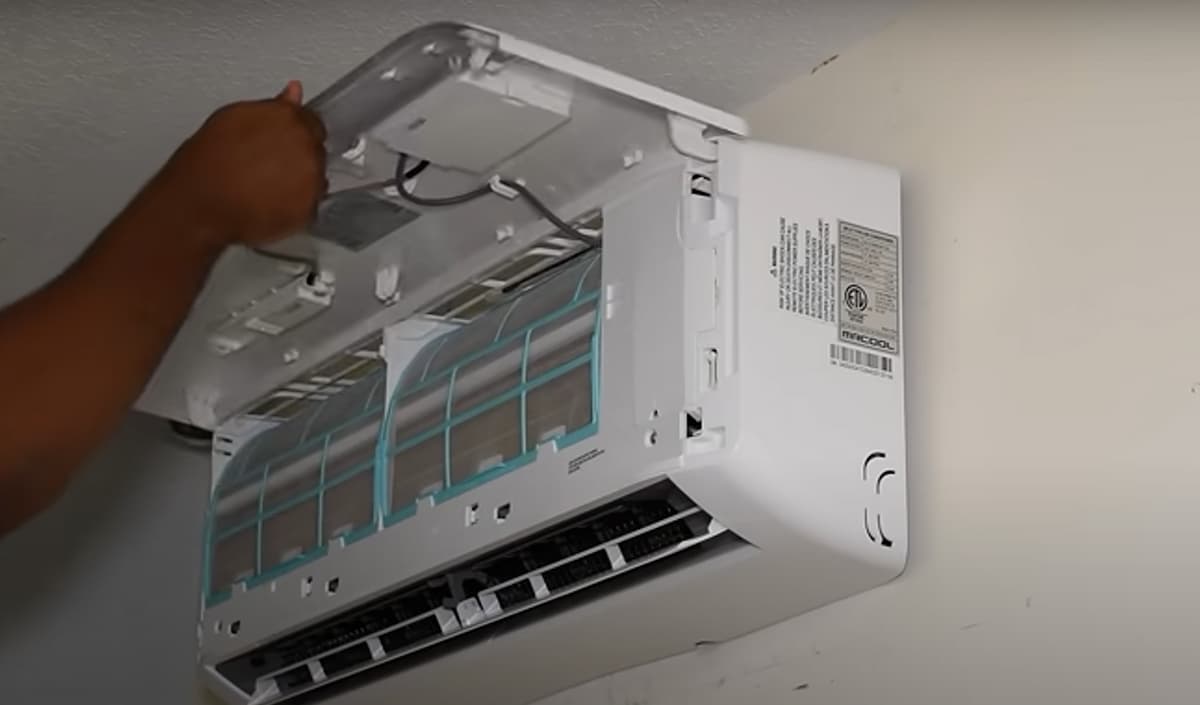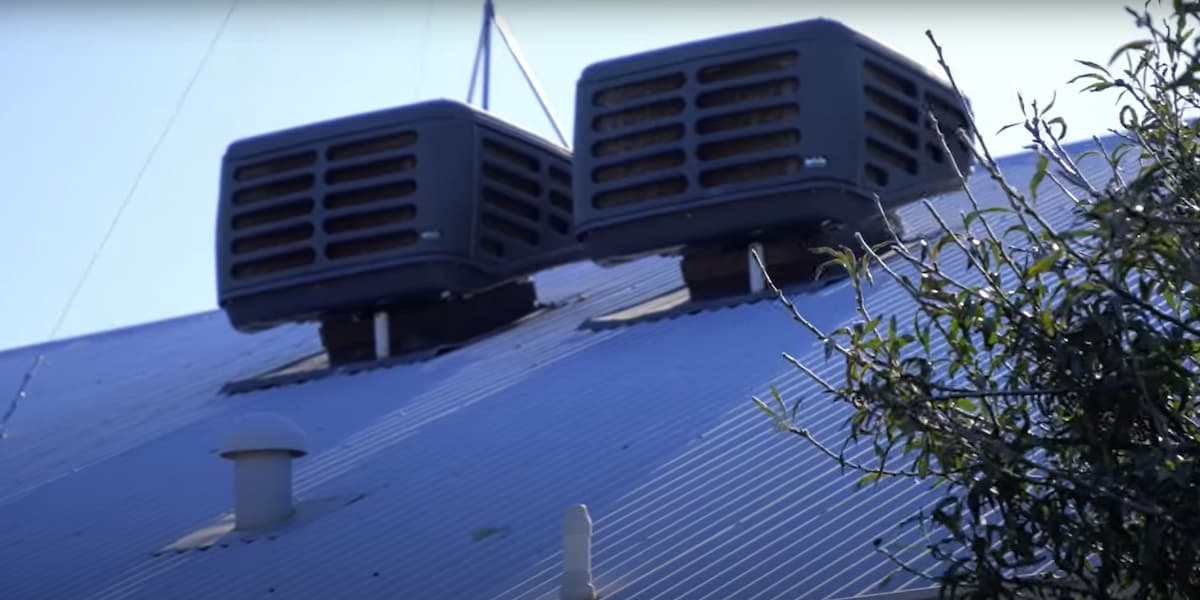Hydronic systems are used in a variety of different applications, most commonly as domestic hot water heating and heat transfer. A hydronic system is a closed-loop piping system that uses fluid, usually water or some form of an aqueous solution to transport heat from one location to another. In this case, the domestic hot water circuit supplies heat via a heating element (resistance heater coil) to the incoming tap water running through it.
The fluid then flows through the system transferring that heat everywhere else it goes until it’s exhausted out of the final tap by way of a drain line back into the supply tank. Typically there are two types of hydronic systems an open-loop and a closed-loop.
Open-Loop Hydronic Heating Systems
A hydronic system that derives its fluid from a non-potable (not drinkable) water source such as well water. There are two types of open-loop systems
Surface water systems are an open-loop system that uses water from a body of surface water, such as a river, stream or pond. If the quality of the surface water is suspect due to contamination, these systems can introduce harmful toxins and chemicals to your potable drinking supply. Well–water systems are the alternative, in this case, the fluid is derived from an underground aquifer via a well pump mechanism. These wells typically have seals and filters fitted in them to ensure that no outside contaminants manage to infiltrate into the potable drinking supply.
Closed-Loop Hydronic Heating System
In a closed-loop hydronic heating system, the fluid is derived from your potable drinking water supply. In this case, a heat pump is used to extract heat from one source and transfer it through the system to another tap where heat is added by way of a heating element or radiator. The fluid then runs back through the closed-loop piping system again transferring that heat everywhere else it goes until it’s exhausted out of the final tap by way of a drain line back into the supply tank.
What is Hydronic System?
When we discuss domestic hot water heat, the term hydronic is used to imply that the heat source is derived from a liquid such as water or an aqueous solution. We then call that liquid “hydronic system heat” and it comes in one of two forms.
Radiant heating, In this case, the heating element (resistance heater coil) transfers its thermal energy directly into the fluid flowing past it in a tubing system. Radiant heat transfer is usually only seen with closed-loop hydronic systems and not open surface water systems.
Conductive Heat, unlike radiant heat, where the thermal energy is transferred directly into a fluid which in turn transfers that energy everywhere else it goes, conductive systems provide for convective heating. In other words, when you turn on your tap with heated water, cold ambient room air flows through copper tubing and along its outer surface, warming it up. In turn, the now-warm air is released back into your room as a result of this secondary convective heat transfer process.
How These Modern Systems Operate
These heating systems use hydronic system heat to provide for either radiant heating or conductive heating with either natural gas or electricity being used as a heat source. And although they carve out a dedicated space within the confines of your home’s architecture via a domestic hot water circuit, these systems are classified as open-loop. This means that their fluid (water) is derived from an outside non-potable (not drinkable) source such as well water and not your potable drinking supply.
What is Hydronic Heating?
Hydronic heating is a form of heating in which heat is transferred via water or some type of fluid. Essentially, when you turn on the hot water tap to take a shower or do dishes, that cold water travels through the piping system inside your walls where it’s warmed up
This process is different from the one used in forced-air heating. In hydronic systems, heat is not transferred by way of hot air being blown into your room by way of a furnace blower. Instead, these systems pump pressurized water or some other warm liquid through copper tubing embedded within your concrete floor slabs. The resulting effect heats up this concrete slab so you can enjoy warm floors during the winter months.

How does Hydronic Heating Work?
A hot-water radiator system consists of a hot-water storage tank, a pump for pressurized water circulation, copper pipe radiators and adjustable valves on the supply and returns lines. The system works as such, hot water is delivered through pipes embedded in concrete floor slabs circulated by the pump to heat radiators located in various rooms.
When you turn on a faucet, it activates an air valve that draws cold tap water from the mainline into the mixing valve where warm water is added before returning to your bathroom sink or tub. Now at 50% warmer than originally, but still not quite warm enough, further hot water is added until you get anywhere from between 20 and 25 degrees celsius. This process continues until all the hot water is distributed.
When the hot water is depleted, the pump switches off and cold pressurized water, which remains in the system’s return lines, begins to flow through copper pipes embedded within your concrete floor slab. When this happens, it absorbs any residual heat coming out of your radiators before returning it back up to the water tank to complete its cycle.
What is Hydronic System in HVAC?
Hydronic system in HVAC is a heating and cooling system that uses water or some other type of fluid as its heat transfer medium. The system works by circulating this fluid through pressurized pipelines embedded within your floor slab to either provide for heating (radiant) or air conditioning (conductive). Because tap water isn’t potable, hydronic systems require their own dedicated source of non-drinkable water which typically comes from an outdoor well or cistern
Why Use Hydronic Systems?
Something else to keep in mind with respect to the mechanics behind closed-loop forced hot-water based hydronic systems is that they’re self-regulating. That means that when you turn up the thermostat, more hot water is required to warm up your floor slab. In turn, this may activate the pump so that it can handle more hot water while simultaneously heating your floors.
Advantages of Using a Hydronic Heating System
There are several reasons why you might want to consider heat transfer via hydronic systems or their more conventional forced air counterparts. For one, hydronic heating tends to be a lot more efficient than forced-air at transferring heat into your room since heating radiators actually emit their own heat during operation
In addition to being able to maintain a constant temperature at all times, you also don’t have to deal with any drafts or cold gusts from vents blowing directly on top of you whenever the furnace kicks on. In fact, there is very little noise at all associated with hydronic heating since the pumps used to circulate hot water are extremely quiet. And if that’s not enough, there’s also very little maintenance involved considering you don’t need any type of filter to cleanout.
Are Hydronic Heating Systems an Efficient Heating System?
Yes, the hydronic heating system is an efficient way to heat your house. Here are some reasons why it’s more efficient than forced-air heating systems.
Hydronic Heating is an Efficient Heating System
Hydronics give off better and more even heating than a forced-air system because the radiator does not depend on air for its transfer of heat. With forced air, you have a lot of moving parts in a small space which means that when the furnace turns on, there may be a cold draft coming from the vents. In addition, with hydronics you do not have any ducts or outside walls that can prevent proper circulation of heated air throughout the entire house.
Hydronic Heating Has Sealed Water Lines With Control Valves
Unlike forced air systems which require ducts for the circulation of heated air, with hydronics you have sealed water lines that make it possible to keep heat in your house. The ducts that are used in forced air systems tend to leak which lost heat (up to 25%) into your attic which means more money on your heating bill.
A Hydronic Heating System Requires Less Maintenance
With forced air systems there is a lot of moving parts so you need to change air filters quite often. With hydronic heating, there is no need for any type of filter because all you need is the pump and the pipes. Also with a hydronic system, you may not hear noise from vents blowing directly on top of you whenever the furnace turns on.
Energy-Efficient Heating System
An average family spends more than $1000 a year on heating bills. This is a very high cost considering that your average household uses more electricity for heating than the air-conditioning system. With hydronics, you need less energy to heat up rooms since water absorbs a lot of heat and it moves from zone to zone retaining the same temperature.





